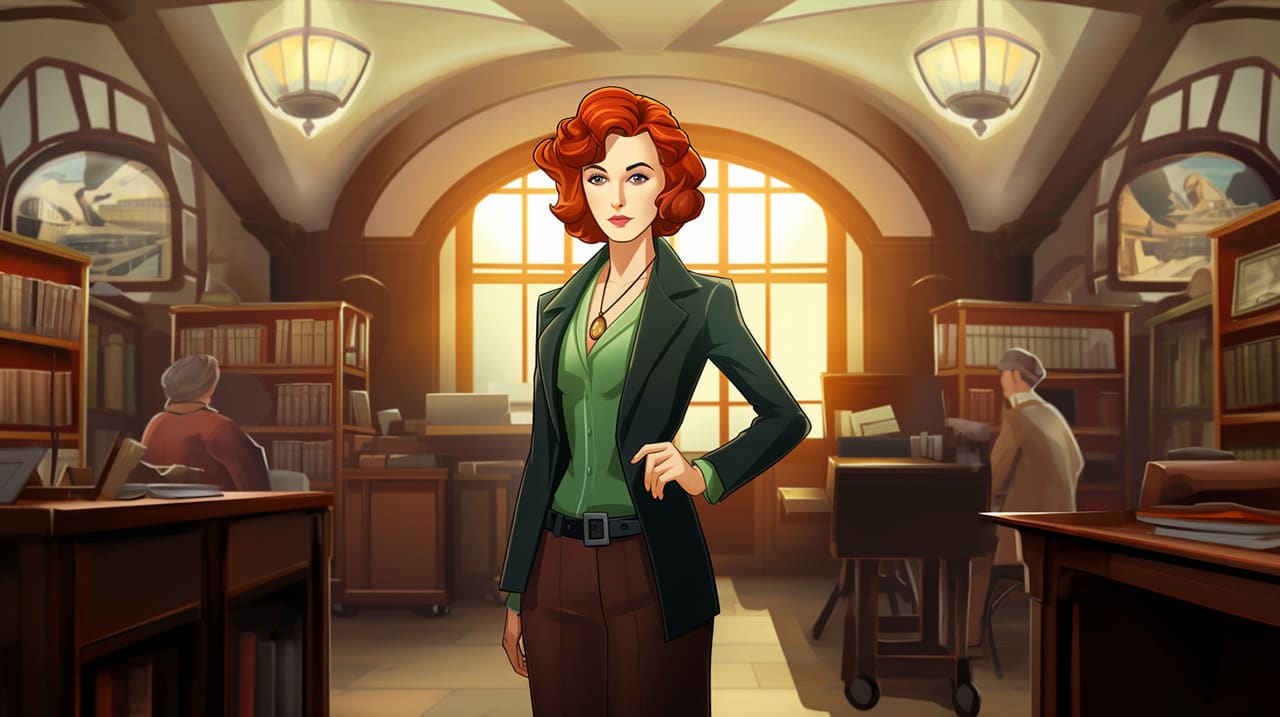Act I: Ascending the Stairs of the Silent Opera House
Laura Sterling, acclaimed detective known for her sharp wit and sharper instincts, could feel the spine-chilling aura of the aged opera house. The ageless edifice, its grandeur now dulled by time, stood silent yet imposing against the gloomy backdrop of dusk. Each crevice mirrored the hollowness of the desolate theatre, silent for decades due to its infamous reputation of the paranormal; it was a grand paradox, an abandoned monument of music and mirth.
Sterling’s high-heeled boots echoed ominously off the marble staircase leading to the dress circle. The grand chandelier overhead, now thick with dust and cobwebs, cast an array of spectral shadows that lurched and danced amidst the decorative plasterwork. A sudden chill gripped her, a sentient coldness that whispered tales of forgotten operatic serenades and specters lost in time.
The silence of the opera house was not ordinary; it was imbued with a spectral melody that only the finely tuned mind of a detective like Sterling could discern. Each creak of the centuries-old wood, each whisper of the rustling velvet curtains seemed like a verse from an unseen phantom. Sterling felt a peculiar connection with the building, as if its silenced music and her buried familial ties to this place were linked.
Her father, once a famous tenor, had filled these halls with music, before his untimely death on its very stage. His spirit, they said, had never left. Armed with the tools of her trade, a keen mind and state-of-the-art spectral analysis equipment, Sterling was determined to unravel the enigma that shrouded her family history.
Act II: Unveiling the Mystery – The Enigma of Phantom Echoes
Rooted in shadowy legends and whispered rumours, the phantom echoes seemed intertwined with the very bricks and mortar of the building. Sterling set up her advanced spectral analysis equipment in the heart of the opera house – the grand stage. The equipment churned alive, its lights flickering and casting eerie patterns over the worn stage curtain.
Whippoorwill Technologies was known for their cutting-edge, ghost-hunting equipment. Sterling had chosen their latest model, a sleek device designed to map paranormal energies and isolate spectral audio. However, experimenting with such technology within these haunted premises was a leap into the abyss of the unknown, a risk she was willing to take.
As she initiated the spectral audio isolator, the silence of the opera house was broken by a cacophonous static. As Sterling tuned the device, the static ebbed into a hushed lullaby, a song Sterling had not heard for years. The tune her father used to sing to her every night before bed. A shiver ran down her spine; this was her first eerie encounter with the phantom echoes.
Act III: Eerie Encounters and Haunting Serenades
In the following nights, Sterling became a regular visitor to the opera house. Using her technology, she captured more spectral melodies and eerie whispers. The voices seemed to call out to her, rendering her sleepless nights filled with spectral confrontation and haunting harmonies.
One night, as the spectral audio isolator resonated with her father’s voice singing an aria, Sterling felt an overwhelming mixture of fear and longing. Her father’s voice, echoing after decades of silence, tormented her. Was she merely a victim of her own mournful longing? Or was her father trying to communicate from beyond the grave?
Each spine-tingling contact with the spectral serenades left her questioning her sanity. As much as Sterling clung to the rational, these haunting melodies blurred the line between the scientific and supernatural. As a detective, she sought answers, yet each spectral echo only deepened the enigma.
Act IV: Deciphering the Symphony of the Supernatural
Sterling, armed with courage and curiosity, conducted further spectral readings. Using her in-depth knowledge of music and her father’s repertoire, she began to recognize patterns in the spectral echoes. The songs were not random; they were her father’s favorite pieces, and each one held a clue, signifying critical days in his short-lived life.
Weeks of intensive spectral analysis had rewarded Sterling with a wealth of spectral audio data, which she painstakingly decrypted. With the assistance of her father’s old journals, she discovered a secret room beneath the opera house, a hidden sanctuary where her father used to compose.
The climax of her investigation led Sterling to decipher an unnerving truth. The spectral echoes were not just fragments of her father’s voice but lost recordings he had made, hidden away. Her father’s spirit was not haunting the opera house; his voice echoed in the solitude due to a forgotten sound system still active. This revelation left Sterling in a moral dilemma – would revealing the truth about her father’s spectral echoes quell the local legends and alter the opera house’s eerie charm forever?
In the end, Sterling chose to keep her father’s spectral symphony a secret. The Silent Opera House remained a silent tribute to her father and the music that echoed within its walls, a bridge intertwining her past, the present mystery, and an uncertain future. The phantom echoes became a comforting reminder of her father’s undying love for music, eternally resounding in the opera house’s ghostly quietude.
If only every ghost were music, every haunting a song, and every mystery, a melody waiting to be deciphered, thought Sterling as she ascended the stairs one last time.
